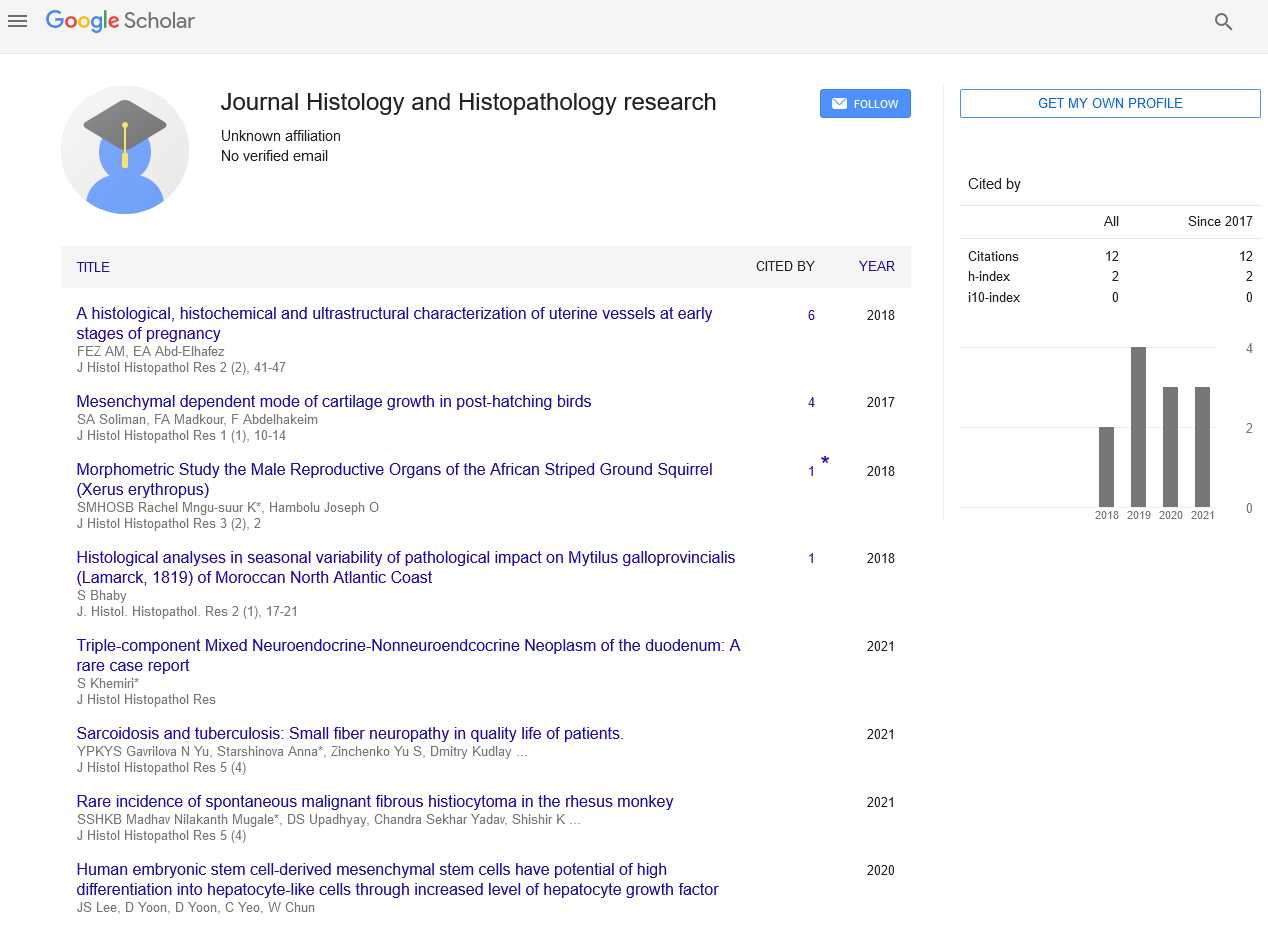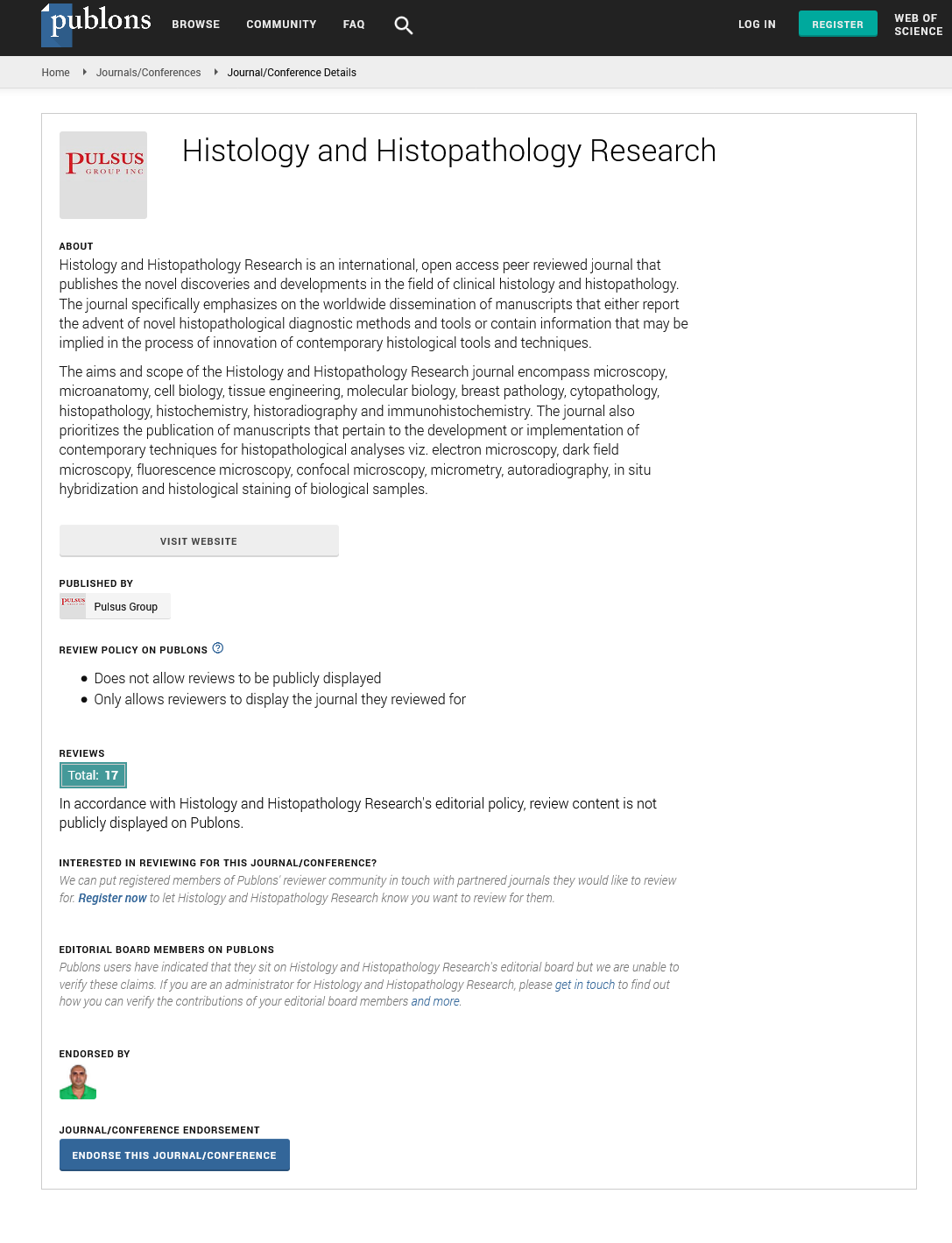Stem cells can differentiate into various types of cells
Received: 02-Jul-2021 Accepted Date: Jul 16, 2021; Published: 23-Jul-2021
Citation: James J. Stem cells can differentiate into various types of cells. J Histol Histopathol Res. 2021;5(2)
This open-access article is distributed under the terms of the Creative Commons Attribution Non-Commercial License (CC BY-NC) (http://creativecommons.org/licenses/by-nc/4.0/), which permits reuse, distribution and reproduction of the article, provided that the original work is properly cited and the reuse is restricted to noncommercial purposes. For commercial reuse, contact reprints@pulsus.com
Description
In multicellular creatures, foundational microorganisms are undifferentiated or halfway separated cells that can separate into different kinds of cells and multiply endlessly to deliver business as usual undifferentiated organism. They are the soonest sort of cell in a cell lineage. They are founding both undeveloped and grown-up organic entities,they have somewhat various properties in each. They are normally recognized from ancestor cells, which can't separate endlessly, and antecedent or impact cells, which are typically dedicated to separating into one cell type. In well evolved creatures, about 50–150 cells make up the inward cell mass during the blastocyst phase of undeveloped turn of events, around days 5–14. These have undifferentiated cell ability. In vivo, they in the end separate into the entirety of the body's cell types (making them pluripotent). This cycle begins with the separation into the three germ layers the ectoderm, mesoderm and endoderm at the gastrulation stage. Nonetheless, when they are separated and refined in vitro, they can be kept in the foundational microorganism stage and are known as undeveloped undifferentiated organisms (ESCs).
Grown-up undifferentiated organisms are found in a couple of select areas in the body, known as specialties, like those in the bone marrow or balls. They exist to renew quickly lost cell types and are multipotent or unipotent, which means they just separate into a couple of cell types or one cell type. In vertebrates, they incorporate, among others, hematopoietic immature microorganisms, which renew blood and resistant cells, basal cells, which keep up with the skin epithelium, and mesenchymal undifferentiated organisms, which keep up with bone, ligament, muscle and fat cells. Grown-up undifferentiated organisms are a little minority of cells; they are unfathomably dwarfed by the begetter cells and terminally separated cells that they separate into.
Examination into foundational microorganisms outgrew discoveries by Canadian researcher Ernest McCulloch, James Till and Andrew J. Becker at the University of Toronto in the 1960s. As of 2016, the lone set up clinical treatment utilizing immature microorganisms is hematopoietic undifferentiated organism transplantation first acted in 1958 by French oncologist Georges Mathé. Since 1998 nonetheless, it has been feasible to culture and separate human undeveloped foundational microorganisms (in undifferentiated organism lines). The way toward confining these phones has been disputable, on the grounds that it regularly brings about the obliteration of the undeveloped organism. Hotspots for separating ESCs have been limited in some European nations and Canada, yet others, for example, the UK and China have advanced the research. Somatic cell atomic exchange is a cloning technique that can be utilized to make a cloned undeveloped organism for the utilization of its early stage immature microorganisms in undifferentiated organism therapy. In 2006, a Japanese group drove by Shinya Yamanaka found a strategy to change over develop body cells back into foundational microorganisms. These were named actuated pluripotent immature microorganisms (iPSCs)
The critical properties of an undifferentiated cell were first characterized by Ernest McCulloch and James Till at the University of Toronto in the mid-1960s. They found the blood-shaping foundational microorganism, the hematopoietic undeveloped cell (HSC), through their spearheading work in mice. McCulloch and Till started a progression of analyses in which bone marrow cells were infused into lighted mice. They noticed irregularities in the spleens of the mice that were directly relative to the quantity of bone marrow cells infused. They guessed that each protuberance (state) was a clone emerging from a solitary marrow cell (foundational microorganism). In ensuing work, McCulloch and till, joined by graduate understudy Andy Becker and senior researcher Lou Siminovitch, affirmed that each protuberance did indeed emerge from a solitary cell. Their outcomes were distributed in Nature in 1963. In that very year, Siminovitch was a lead agent for examines that discovered settlement shaping cells were equipped for self-reestablishment, which is a key characterizing property of immature microorganisms.






